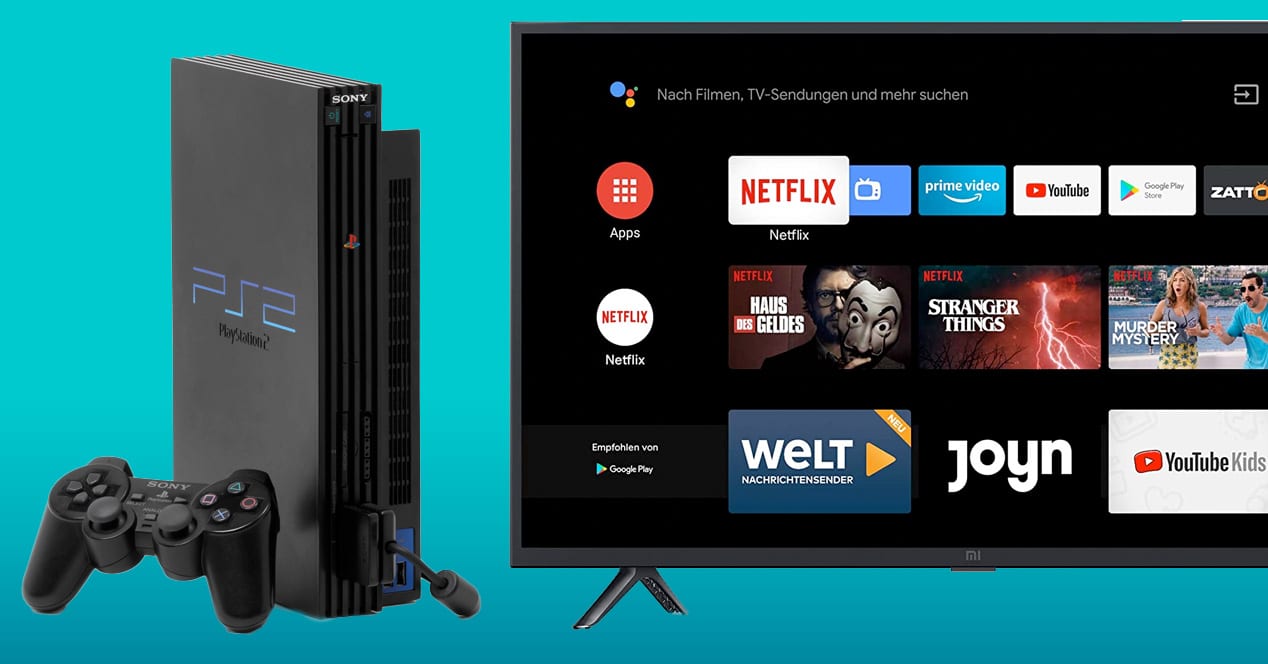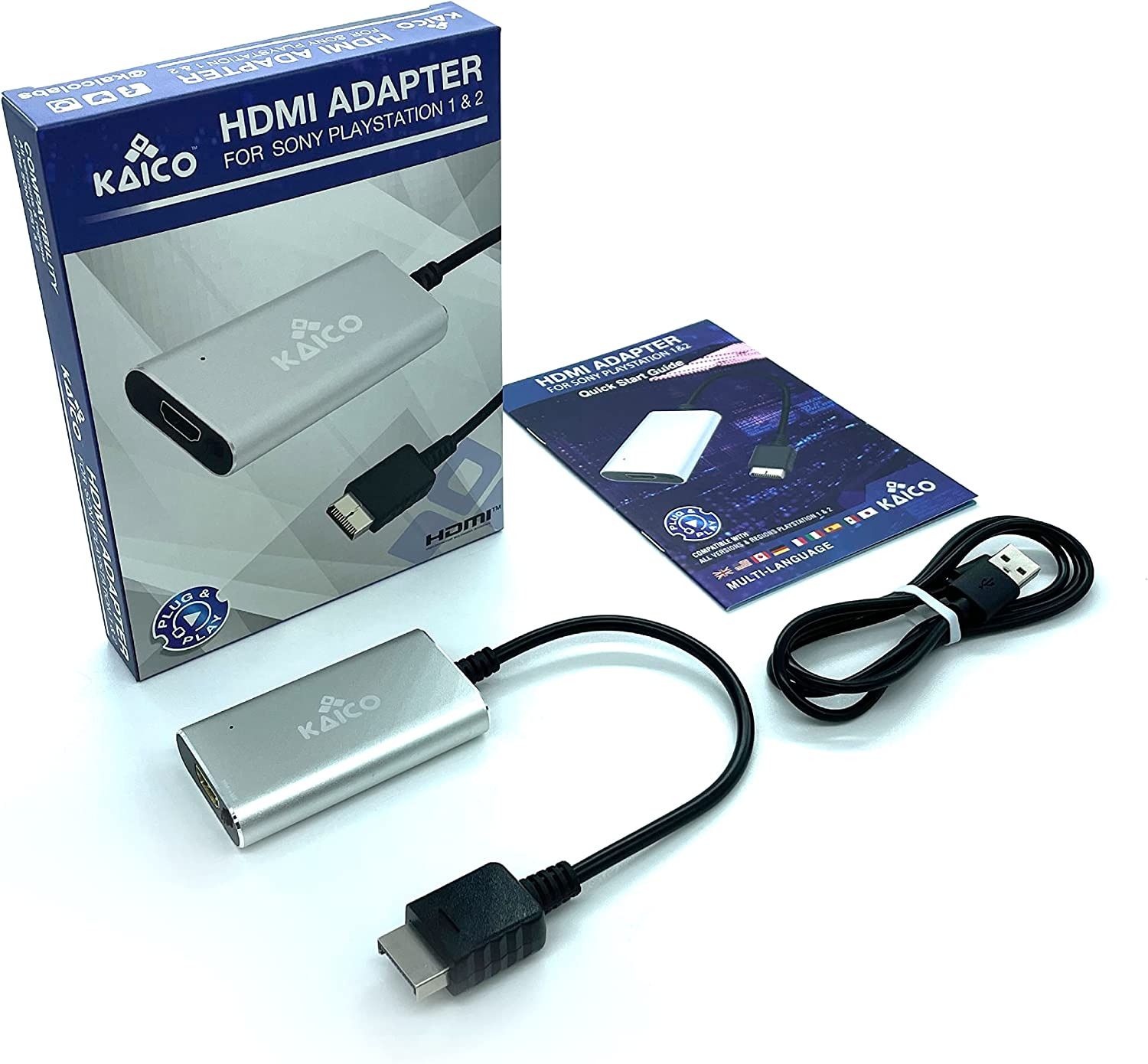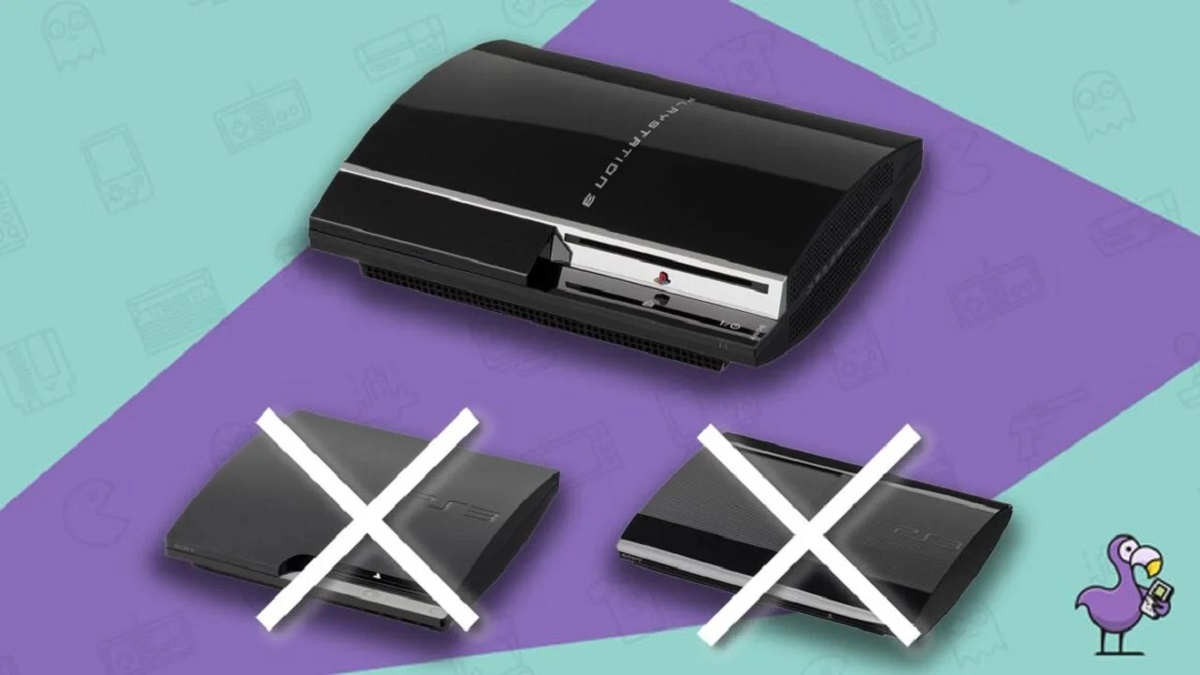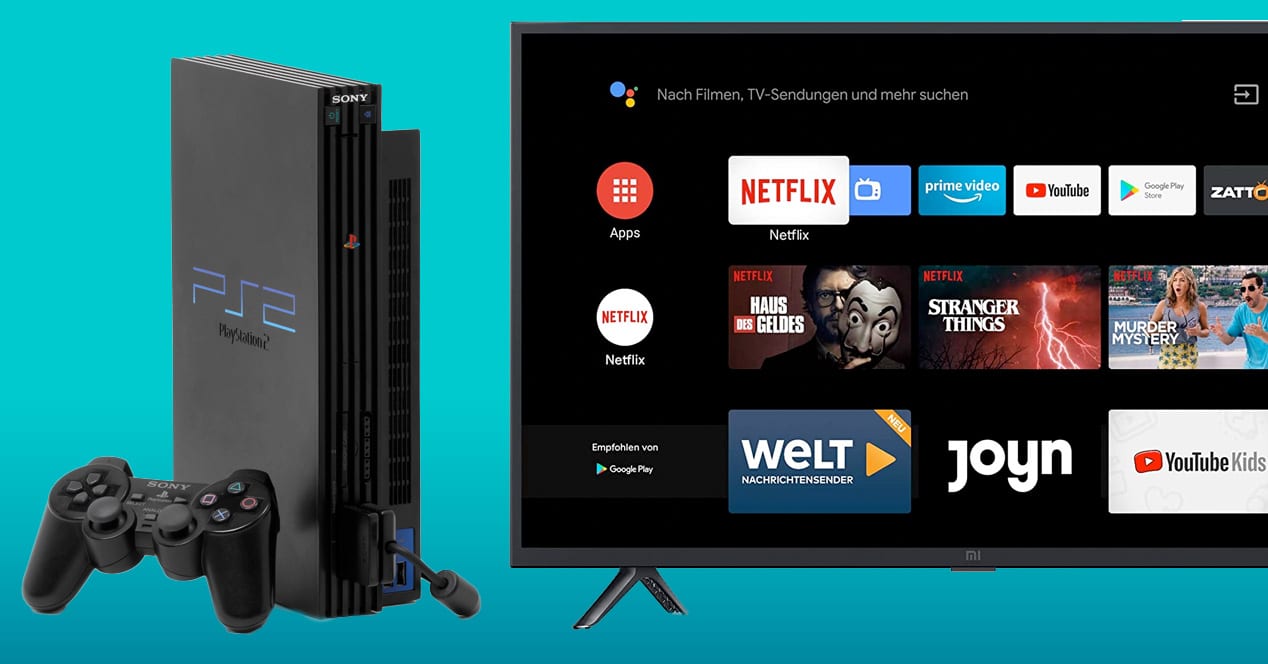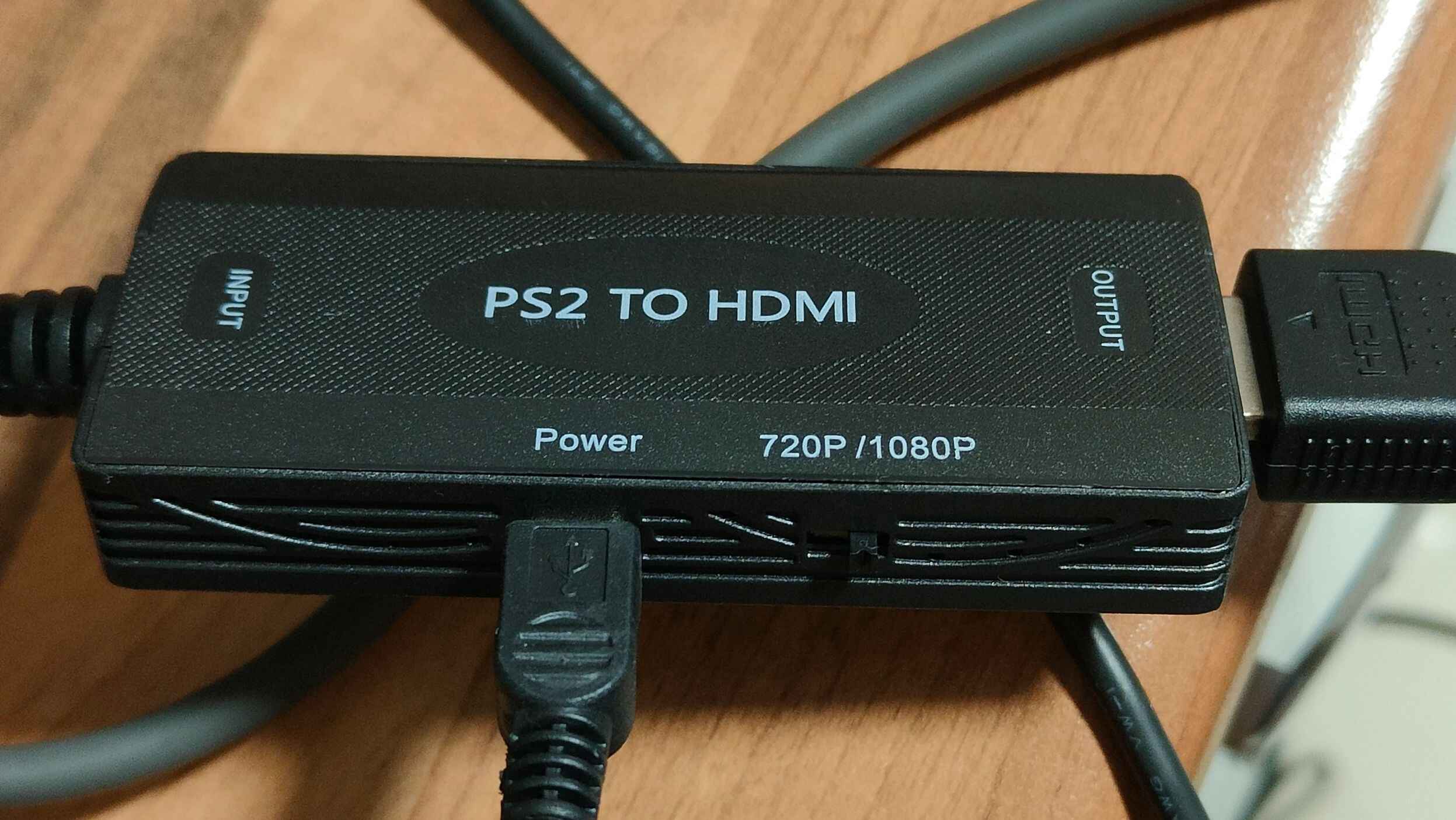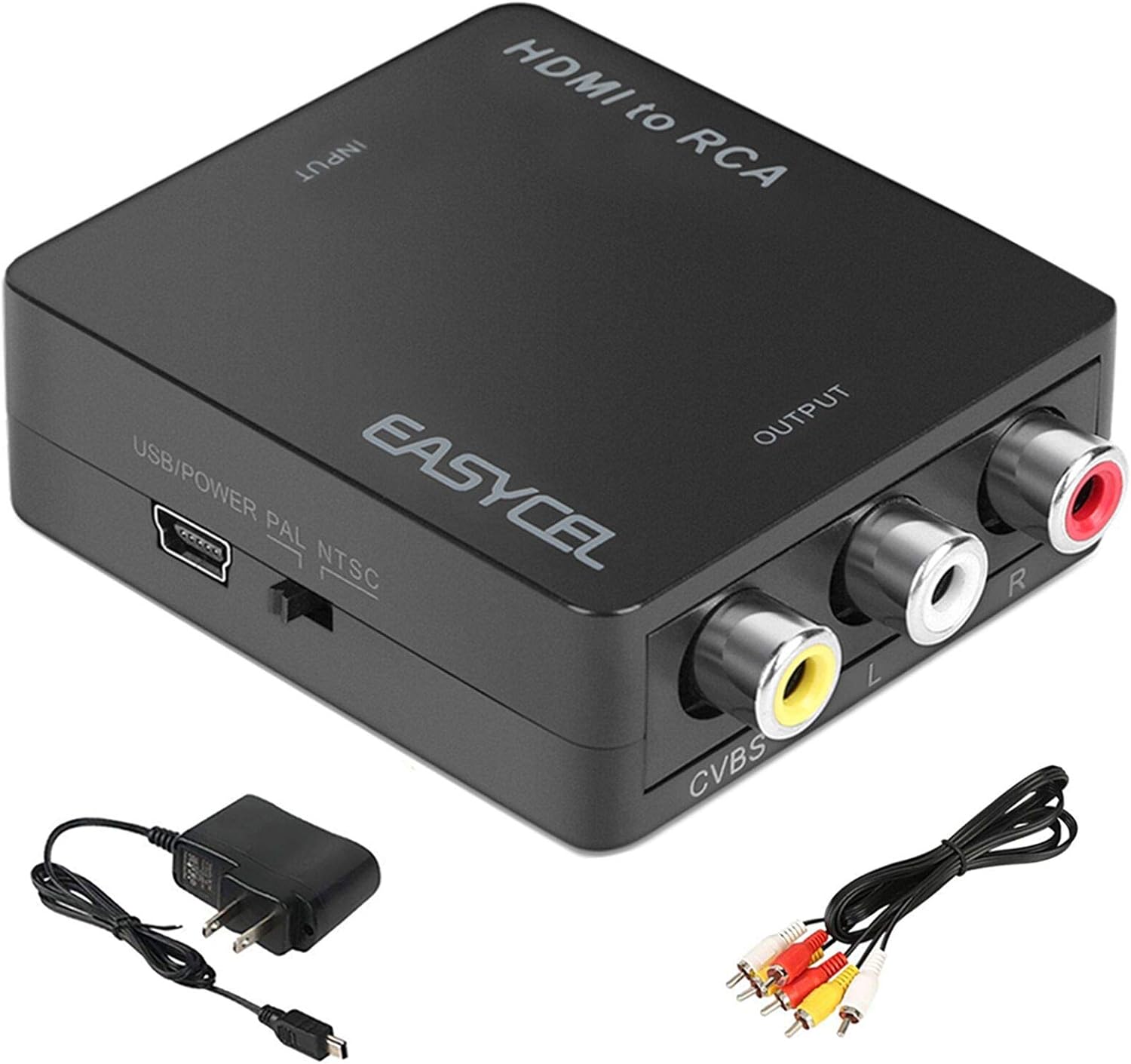Introduction
Welcome to the world of gaming! If you are a fan of classic video games and own a PlayStation 2 (PS2) console, you might be wondering how to connect it to your modern Smart TV. Fear not, as in this article, we will walk you through the process step by step.
While the PS2 was released over two decades ago, it still has a loyal fanbase due to its extensive game library and nostalgic charm. However, connecting it to a Smart TV can be a bit tricky, considering the technological gap between the two.
Fortunately, you don’t need to be a tech expert to hook up your PS2 to a Smart TV. With a few simple connections and adjustments, you’ll be ready to relive your favorite gaming moments on a larger and more vibrant screen.
In this guide, we will discuss various methods of connecting your PS2 to a Smart TV, such as using HDMI, component, composite, and S-Video connections. We’ll also provide instructions on selecting the correct input on your Smart TV and adjusting the video and audio settings for the best gaming experience.
Before we delve into the specific connection methods, let’s take a closer look at the components involved and the different types of connections available.
Overview of Connections
Before connecting your PS2 to a Smart TV, it’s important to understand the various types of connections available. Depending on your TV’s input options and the cables you have, you can choose from HDMI, component, composite, and S-Video connections.
1. HDMI Connection:
The HDMI (High-Definition Multimedia Interface) connection offers the best quality and is the most straightforward option if your Smart TV has an HDMI input. This digital connection carries both audio and video signals, providing high-definition gaming on your TV.
2. Component Connection:
The component connection is an analog connection that uses three RCA cables, usually color-coded red, green, and blue, for video input, and separate RCA cables for audio input. This connection provides a good video quality but might not support the highest resolutions.
3. Composite Connection:
If your Smart TV doesn’t have component inputs, the composite connection is a viable option. It uses a single RCA cable with three color-coded plugs: yellow for video and white and red for audio. The composite connection offers standard-definition video quality.
4. S-Video Connection:
The S-Video connection provides a slightly better video quality compared to composite connections. It uses a round plug with multiple pins to transmit video signals. However, it requires a separate audio connection using the red and white RCA cables.
These are the primary connection options for connecting your PS2 to a Smart TV. Each has its pros and cons, so choose the one that best suits your TV’s input options and the cables you have available.
Now that we’ve covered the different types of connections, let’s move on to the step-by-step instructions for each method. By following these instructions, you can easily set up your PS2 and start enjoying your favorite games on your Smart TV.
HDMI Connection
The HDMI connection is the most straightforward and convenient way to connect your PS2 to a Smart TV, provided that your TV has an HDMI input. This connection ensures high-definition audio and video output for an immersive gaming experience.
Here’s how to set up the HDMI connection:
- Ensure your Smart TV and PS2 console are powered off.
- Locate the HDMI port on your Smart TV and the HDMI output port on your PS2 console. They are usually labeled “HDMI”.
- Connect one end of the HDMI cable to the HDMI output port on the PS2 console.
- Plug the other end of the HDMI cable into the HDMI input port on your Smart TV.
- Power on your Smart TV and select the corresponding HDMI input source using the TV remote or on-screen menu.
- Turn on your PS2 console.
Your Smart TV should automatically detect the connected PS2 console, and you should see the PS2 interface on the screen. If not, make sure the HDMI input source is selected correctly. You may need to consult your TV’s user manual for specific instructions on selecting the correct input.
Once the HDMI connection is established, you can navigate through the PS2 menu using the controller and start playing your favorite games. The HDMI connection ensures a high-quality gaming experience with crisp visuals and clear audio.
Note that some Smart TVs may offer additional settings to enhance the HDMI connection. You can explore these settings in the TV’s menu to adjust picture quality, aspect ratio, sound output, and other options to optimize your gaming experience.
With the HDMI connection successfully set up, you’re now ready to enjoy your PS2 games on the big screen. Just sit back, grab your controller, and immerse yourself in the nostalgic world of gaming.
Component Connection
If your Smart TV doesn’t have an HDMI input but does support component inputs, you can still connect your PS2 using the component connection. This analog connection offers a good video quality and can be a reliable option for enjoying your PS2 games on your Smart TV.
Here’s how to connect your PS2 to your Smart TV using the component connection:
- Make sure both your Smart TV and PS2 console are turned off.
- Identify the component input ports on your Smart TV. They are typically labeled “Component” and have three colored inputs – red, green, and blue.
- Take the component cable, which usually comes with the PS2 console, and connect the red, green, and blue plugs to the corresponding component input ports on your Smart TV.
- Connect the audio cables that came with the PS2 console. Match the white and red plugs to the corresponding audio input ports on your TV.
- Power on your Smart TV and switch it to the correct component input source using the TV remote or on-screen menu options.
- Power on your PS2 console.
After following these steps, you should see the PS2 interface on your Smart TV. If not, make sure the component input source is correctly selected on your TV. Refer to your TV’s user manual for specific instructions if needed.
Once the component connection is established, you’re ready to dive into your favorite PS2 games. Simply use your controller to navigate the interface and start playing. Although the component connection does not offer the same level of video quality as HDMI, it still provides a satisfying gaming experience.
Remember that you might need to adjust the video settings on your TV to ensure the best picture quality. Consult your TV’s user manual or on-screen menu options to access picture settings such as brightness, contrast, and color calibration.
With the component connection successfully set up, you can now enjoy your beloved PS2 games on your Smart TV. Immerse yourself in the adventures, nostalgia, and excitement that this classic gaming console has to offer.
Composite Connection
If your Smart TV lacks both HDMI and component inputs, don’t worry. You can still connect your PS2 using the composite connection. While this connection offers standard-definition video output, it allows you to enjoy your PS2 games on your Smart TV without the need for additional adapters or cables.
Follow these steps to set up the composite connection:
- Ensure that your Smart TV and PS2 console are turned off.
- Examine the input ports on your Smart TV. Look for the composite input, usually labeled with a yellow plug or “AV”. It may also have separate red and white inputs for audio.
- Take the composite cable that came with your PS2 console. Connect the yellow plug to the yellow composite input on your Smart TV.
- Attach the white and red plugs of the composite cable to the matching audio inputs on your TV.
- Power on your Smart TV and select the composite input source through your TV remote or on-screen menu.
- Now, turn on your PS2 console.
If you followed the steps correctly, you should see the PS2 interface on your Smart TV’s screen. In case the PS2 interface does not appear, ensure that the composite input source is accurately selected on your TV. Consult your TV’s manual for detailed instructions if required.
Once the composite connection is established, you can dive into your favorite PS2 games. Use your controller to navigate the PS2 menu and start gaming. Keep in mind that the composite connection provides standard-definition video quality, so the graphics may not be as sharp as with other connection options.
To enhance the visual experience, you may need to adjust the picture settings on your Smart TV. Navigate through the on-screen menu or consult the TV’s manual to access these settings. You can adjust brightness, contrast, and color settings to optimize the picture quality for gaming.
With the composite connection successfully set up, you can now enjoy your beloved PS2 games on your Smart TV, albeit in standard definition. Immerse yourself in the nostalgia and excitement of classic gaming and relish the adventure right from your Smart TV screen.
S-Video Connection
If your Smart TV lacks HDMI, component, and composite inputs, you can still connect your PS2 using the S-Video connection. While this connection doesn’t provide the highest video quality, it offers a better alternative to composite connections, delivering crisper and clearer graphics.
Here are the steps to set up the S-Video connection:
- Ensure that both your Smart TV and PS2 console are turned off.
- Locate the S-Video port on your Smart TV. It is usually a round plug with multiple pins.
- Take the S-Video cable and connect it to the S-Video port on your Smart TV.
- Attach the red and white audio plugs of the composite cable to the matching audio inputs on your TV.
- Power on your Smart TV and select the appropriate S-Video input source through your TV remote or on-screen menu.
- Turn on your PS2 console.
If you’ve correctly followed these steps, you should see the PS2 interface displayed on your Smart TV. If the PS2 interface does not appear, ensure that the S-Video input source is accurately selected on your TV. Refer to your TV’s user manual for specific instructions, if necessary.
Once the S-Video connection is established, you can navigate through the PS2 menu using your controller and start playing your favorite games. Although the S-Video connection may not provide the same level of video quality as HDMI or component connections, it delivers a better visual experience compared to composite connections.
Remember to check your TV’s settings and make adjustments to optimize the picture quality. You can access settings such as brightness, contrast, and color calibration through the TV’s on-screen menu or by referring to the manual.
With the S-Video connection successfully set up, you can now enjoy your beloved PS2 games on your Smart TV. Immerse yourself in the gaming experience and relish the excitement of classic titles brought to life on your TV screen.
Selecting the Correct Input on Your Smart TV
After successfully connecting your PS2 to your Smart TV, the next step is to select the correct input source on your TV. This ensures that the signal from the PS2 is properly recognized and displayed on the screen.
Here’s how to select the correct input source on your Smart TV:
- Locate the remote control for your Smart TV or use the buttons on the TV itself.
- Look for the “Input” or “Source” button on the remote control or the relevant button on the TV. It is usually represented by an icon that resembles a rectangle with an arrow pointing into it.
- Press the “Input” or “Source” button to view the available input sources on your Smart TV.
- Using the navigation buttons, scroll through the list of input sources until you find the one that corresponds to the connection you used for your PS2 (e.g., HDMI, component, composite, or S-Video).
- Select the input source that matches your PS2 connection by pressing the OK or Enter button on the remote control.
Once you have selected the correct input source, your Smart TV should display the interface or game from your PS2 console. If the PS2 interface does not appear, double-check that the connection is securely plugged into both the console and the TV, and that the PS2 console is powered on.
If you have multiple devices connected to your Smart TV, it’s a good idea to label the input sources to make it easier to switch between them in the future. Consult your TV’s user manual for instructions on how to customize and label the input sources.
Remember, each Smart TV model may have slightly different instructions for selecting input sources. If you’re having trouble finding the correct input source, refer to your Smart TV’s user manual or manufacturer’s website for specific instructions tailored to your device.
By selecting the correct input source on your Smart TV, you can seamlessly switch to the PS2 connection and start playing your favorite games without any hassle.
Adjusting Video and Audio Settings on Your Smart TV
After connecting your PS2 to your Smart TV, you may want to optimize the video and audio settings to enhance your gaming experience. Adjusting these settings can help improve picture quality, audio output, and overall gameplay immersion. Here’s how to tweak the settings on your Smart TV:
1. Picture Settings:
Navigate to the picture settings menu on your Smart TV. Look for options such as brightness, contrast, color saturation, sharpness, and color temperature. Experiment with these settings to find the optimal combination that suits your gaming preferences. Keep in mind that different games may display better with slight adjustments to these settings.
2. Aspect Ratio:
Choose the correct aspect ratio setting for your gaming experience. Most PS2 games are designed for a 4:3 aspect ratio. If your Smart TV has an option to adjust the aspect ratio, select the one that maintains the correct proportions without stretching or distorting the image.
3. Motion Settings:
Depending on your Smart TV model, you may have motion settings that affect how movement is displayed on the screen. These settings can be useful for reducing motion blur or adjusting the smoothness of fast-paced gaming. Experiment with the motion settings to find the balance that works best for your gaming style.
4. Audio Settings:
Access the audio settings menu on your Smart TV to modify the audio output. Look for options such as equalizer settings, sound mode, and balance. Adjust these settings to enhance the clarity, depth, and overall audio experience while gaming.
5. Game Mode:
Many modern Smart TVs offer a game mode option. By enabling this mode, you can reduce input lag, which refers to the delay between pressing a button on the controller and the corresponding action appearing on the screen. Enabling game mode can improve responsiveness, making your gaming experience smoother and more enjoyable.
6. Surround Sound:
If you have a surround sound system connected to your Smart TV, ensure that the audio settings are configured to output sound through the correct channels. You may need to select the appropriate audio output format, such as Dolby Digital or DTS, to fully utilize your surround sound system.
Remember to refer to your Smart TV’s user manual for specific instructions on accessing and adjusting these settings, as they may vary depending on the make and model of your TV. Additionally, make note of any changes you make to the settings in case you want to revert them back later.
By fine-tuning the video and audio settings on your Smart TV, you can create a customized gaming experience that enhances the graphics, audio, and overall immersion while playing your favorite PS2 games.
Troubleshooting Common Issues
Connecting your PS2 to a Smart TV can sometimes come with its share of challenges. However, most issues can be resolved with a few troubleshooting steps. Here are some common problems you might encounter and how to address them:
1. No Signal or Blank Screen:
If you’re not getting any signal or the screen is blank after connecting the PS2 to your Smart TV, double-check that the connections are secure. Ensure that the cables are plugged in correctly and that the input source on your TV matches the connection used for your PS2. Try power cycling both the Smart TV and the PS2 by turning them off, unplugging them for a few minutes, and then powering them back on.
2. Incorrect Aspect Ratio:
If the aspect ratio of the game appears distorted or stretched on your Smart TV, access the display settings on your TV and adjust the aspect ratio to match the game’s original format (usually 4:3). This will ensure that the display maintains the correct proportions and the game appears as intended.
3. Audio Issues:
If you’re experiencing audio issues, such as no sound or distorted audio, check the audio settings on your Smart TV. Ensure that the correct audio output source is selected, such as the HDMI, component, or composite input, depending on your connection. Also, verify that the volume is turned up and not muted on both the TV and the PS2 console.
4. Input Lag:
If you notice a delay between pressing buttons on the controller and the corresponding action on the screen, you may be experiencing input lag. Enable the game mode or a similar setting on your Smart TV, which can help reduce input lag and improve the responsiveness of the controls.
5. Unsupported Resolutions:
If your Smart TV does not support the resolution outputted by the PS2, you may encounter display issues. In this case, consult your TV’s user manual or manufacturer’s website for any firmware updates that may provide compatibility with lower or non-standard resolutions.
6. Connecting Multiple Devices:
If you have multiple devices connected to your Smart TV, ensure that you switch to the correct input source for the PS2. Sometimes, other connected devices can interfere with the signal or cause conflicts. Verify that the PS2 is the active input source to avoid any potential issues.
If you’re unable to resolve the issue despite troubleshooting, consult the user manual of your Smart TV or contact the manufacturer’s support for further assistance. They will be able to provide specific guidance based on your TV’s model and any known issues or solutions.
Remember, patience and persistence are key when troubleshooting. By following these steps and addressing any common issues that arise, you can ensure a smooth and enjoyable gaming experience with your PS2 on your Smart TV.
Conclusion
Connecting your PS2 to a Smart TV opens up a world of possibilities, allowing you to relive the excitement of playing classic games on a larger and more vibrant screen. While the process may seem daunting at first, it is actually quite straightforward with the right knowledge and a few simple steps.
In this guide, we discussed various connection methods, including HDMI, component, composite, and S-Video, to help you find the best option based on your Smart TV’s available inputs. We also provided instructions on selecting the correct input source on your TV and adjusting the video and audio settings to optimize your gaming experience.
Remember to refer to your Smart TV’s user manual for specific instructions tailored to your device. Each TV may have slightly different menus and settings, so following the provided instructions will ensure proper configuration.
If you encounter any issues along the way, don’t get discouraged. Troubleshooting common problems, such as signal loss, aspect ratio mismatch, audio glitches, input lag, and unsupported resolutions, can help resolve most of the common hurdles that arise during setup.
Once you have successfully connected and configured your PS2 on your Smart TV, it’s time to sit back, grab your controller, and embark on a nostalgic gaming adventure. Immerse yourself in the captivating worlds of your favorite PS2 games and enjoy the enhanced visual and audio experience that playing on a larger screen provides.
Whether you’re revisiting beloved classics or exploring new titles, connecting your PS2 to a Smart TV breathe new life into your gaming journey. So, get ready to create new memories and relive those unforgettable gaming moments from the golden age of PlayStation.







